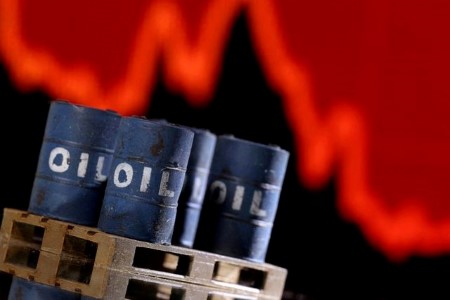




Philippines Trade Update: Exports momentum continues
 DOWNLOAD
DOWNLOAD

Quarterly Economic Growth Release: More BSP cuts to come
 DOWNLOAD
DOWNLOAD

Monthly Economic Update: Fed catches up
 DOWNLOAD
DOWNLOAD


Oil ends higher on US response to Iran nuclear deal comments

Aug 24 (Reuters) – Oil prices ended Wednesday higher after a volatile trading session on concerns that the United States will not consider additional concessions to Iran in its response to a draft agreement that would restore Tehran’s nuclear deal – and potentially the OPEC member’s crude exports.
Iran said it had received a response from the United States to the EU’s “final” text for revival of Tehran’s 2015 nuclear deal with major powers.
Brent crude settled up USD 1.00 to USD 101.22 while US crude settled up USD 1.15 to USD 94.89 a barrel. Both benchmarks fell by more than USD 1 earlier in the session.
Oil was also supported after Saudi Arabia suggested this week that the Organization of the Petroleum Exporting Countries could consider cutting output, though bearish economic signals from central bankers and falling equities weighed.
Both crude oil benchmark contracts touched three-week highs earlier on Wednesday after the Saudi energy minister flagged the possibility of cutting production.
OPEC sources later told Reuters that any cuts by the producer group and its allies, known collectively as OPEC+, are likely to coincide with a return of Iranian oil to the market should Tehran secure a nuclear deal with world powers.
A US official on Monday said that Iran had dropped some of its main demands in negotiations to resurrect a deal to rein in Tehran’s nuclear programme.
OPEC+ is already producing 2.9 million barrels per day less than its target, sources said, complicating any decision on cuts or how to calculate the baseline for an output reduction.
“The oil price and supply outlook suggest that an OPEC+ cut is not currently warranted,” PVM analyst Stephen Brennock said.
“Global oil supply could take a hit as peak US hurricane season approaches. Elsewhere, future supply outages in Libya cannot be discounted while Nigeria’s oil fortunes show little sign of improving.”
Earlier in the session oil prices fell after US government data showed lackluster demand for gasoline, which augurs for a notable slowdown in economic activity. Gasoline demand data showed the four-week average of daily gasoline product supplied 7% below the year-earlier period.
“The plummeting demand for gasoline is dragging the market down,” said Andy Lipow, president of Lipow Oil Associates in Houston, Texas.
(Additional reporting by Shadia Nasralla in London, Mohi Narayan in New Delhi and Yuka Obayashi in Tokyo; Editing by David Goodman, Marguerita Choy and Hugh Lawson)
This article originally appeared on reuters.com





 By Reuters
By Reuters